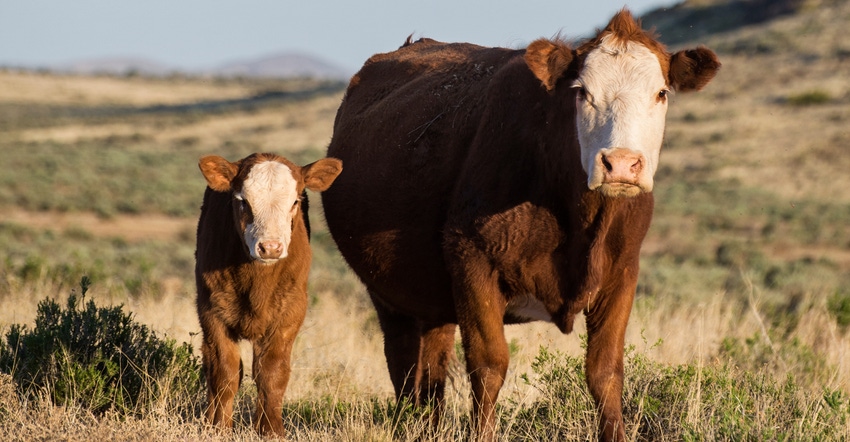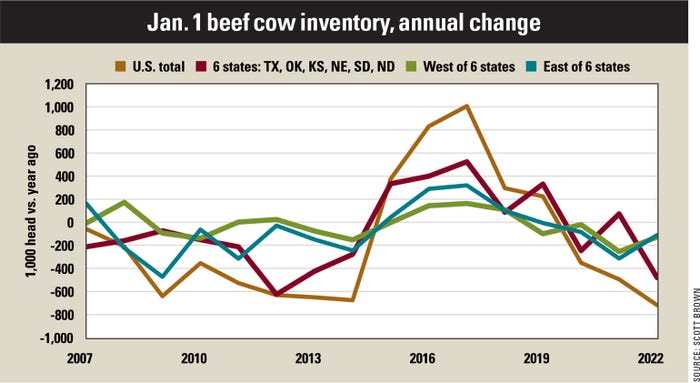Take advantage of beef profits to get your cattle operation in good financial shape.
February 7, 2022

Cow-calf production is one of the most geographically dispersed agricultural sectors in the U.S. Yet in the past couple of years, just six states — Texas, Oklahoma, Kansas, Nebraska, South Dakota and North Dakota — have had an oversized impact on changes to the national beef cow herd.
These states, aligned from Mexico to Canada, not only contain just over 40% of U.S. beef cows, but they also serve as an important gauge for how far east the drought conditions of the past 18 months have progressed.
In the 2021 USDA Cattle Report, these six states posted a small, combined increase in beef cow numbers, even as the national herd fell by nearly half a million head. At the time, there was speculation that cows in states farther west had found greener pastures in areas where moisture conditions remained closer to historical levels. But as drought conditions continued to slowly progress eastward throughout 2021, these six states lost 480,000 beef cows, accounting for two-thirds of the total national decline.
The U.S. is now into its third year of a smaller beef cow herd, and it will take both improved economics and better pasture conditions to generate a turnaround.
Future beef profits
The past two cattle inventory cycles both featured eight consecutive years of a declining herd before numbers began to rebound. The ending and turnaround years of those cycles (2004-05 and 2014-15) both produced what was at the time record-high cow-calf profitability.
While there are certainly many factors other than national beef cow numbers that affect the financial conditions of cow-calf producers, and while there is no reason to believe that the liquidation phase of this cattle cycle will also span exactly eight years, there remains a high degree of confidence that the average operation will see improving profitability into the medium term.

Even though the profitability outlook in general remains very bright, short-term factors in any given year could overshadow the big picture for a time.
For instance, 2021 ended with a 2.8% increase in beef production, even though the year began with cattle-on-feed numbers nearly unchanged as available cattle were placed into feedlots at a higher rate than normal, in large part because of deteriorating pasture conditions. There can also be unexpected developments that affect beef demand, both domestically and in important U.S. export markets.
Weather affects herd size
Precipitation totals and pasture conditions will be important to watch as we move through 2022, particularly in the six states noted above.
Texas, Oklahoma and Kansas, for instance, experienced a below historical average prevalence of moderate drought or worse for 2021, but all three of those states have begun 2022 with far worse conditions. As these three states comprise more than a quarter of the national herd, moisture developments in that region will play a large role in the length and extent of the current herd liquidation phase.
So even as the outlook for cow-calf producers generally remains bright for the next few years, there could be shorter periods of higher-than-expected supply or unanticipated demand setbacks.
Producers should take advantage of likely more profitable times in the years ahead to get their operations in better financial shape. The use of risk management tools to lock in profitable returns may play a key role given other uncertainties in the marketplace.
Brown is a livestock economist with the University of Missouri. He grew up on a diversified farm in northwest Missouri.
About the Author(s)
You May Also Like

.png?width=300&auto=webp&quality=80&disable=upscale)
.png?width=300&auto=webp&quality=80&disable=upscale)
